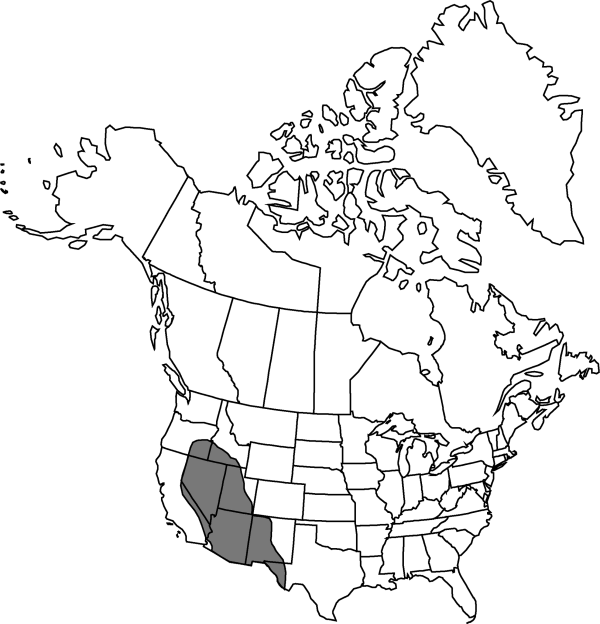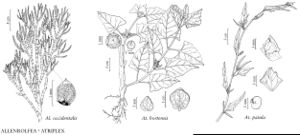Allenrolfea occidentalis
Revis. Gen. Pl. 2: 546. 1891.
Basionym: Halostachys occidentalis S. Watson
Revision as of 17:29, 18 September 2019 by FNA>Volume Importer
Plants 3–15 dm, ± glaucous. Stems woody proximally, fleshy distally; articulations (joints) (2–)3–5(–10) × 1–4.5 mm. Leaves deciduous; blade 2–4 × 2–3 mm. Inflorescences 6–25 × 2.5–4 mm. Utricles enclosed by perianth. Seeds ca. 0.6 mm.
Phenology: Flowering mid summer–late fall.
Habitat: Alkaline soils, mostly on raised sandy hummocks in salt playas and mud flats
Elevation: 1000-1700 m
Distribution

Ariz., Calif., Idaho, N.Mex., Nev., Oreg., Tex., Utah, Mexico.
Discussion
A dominant shrub of salt playas and mudflats in the American Southwest, iodine bush is easily distinguished from great distances by the dark hue of its stems. The blackish-colored shrubs stand in stark contrast to surrounding vegetation and on close examination can be easily distinguished from the opposite-branched, but vegetatively similar members of Sarcocornia.
Selected References
None.
Lower Taxa
None.
